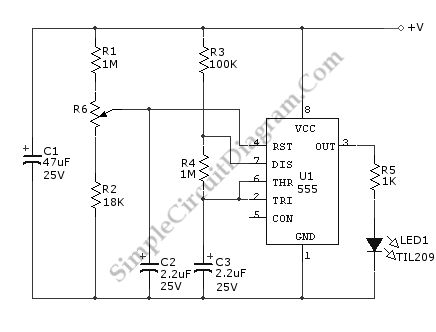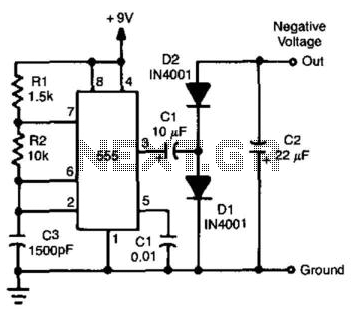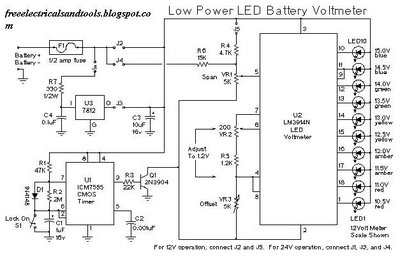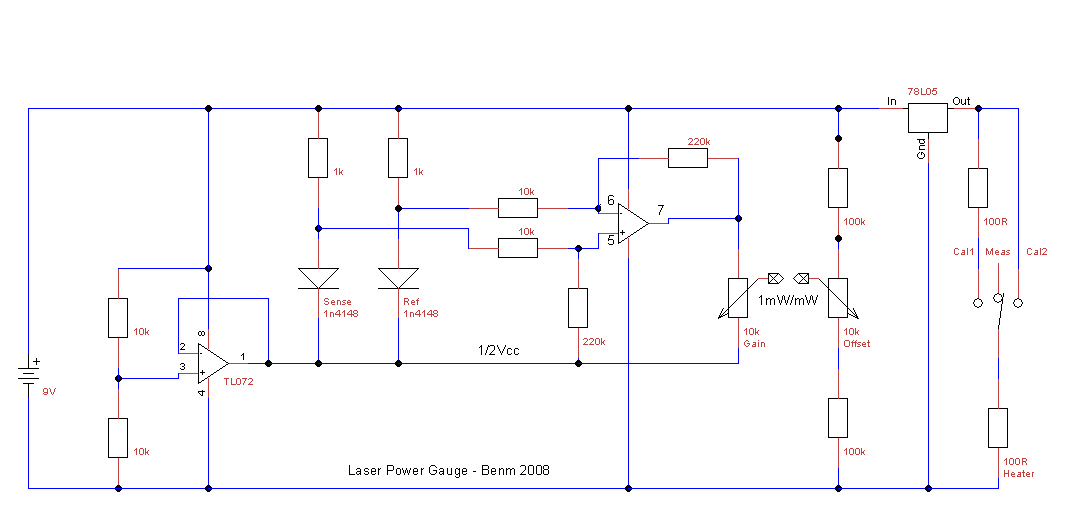
LM317 variable power supply
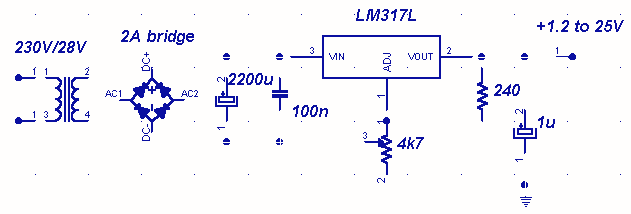
A truly timeless circuit. LM317 is a versatile and highly efficient 1.2-37V voltage regulator that can provide up to 1.5A of current with a large heat sink. It's ideal for just about any application. Since LM317 is protected against short-circuit, no fuse is necessary. Thanks to automatic thermal shutdown, it will turn off if heating excessively. All in all, a very powerful (and affordable!) package, indeed.
The LM317 voltage regulator is a linear voltage regulator that provides a stable output voltage adjustable from 1.2V to 37V, making it suitable for a variety of electronic applications. It operates by maintaining a constant output voltage despite variations in input voltage or load conditions. The device is capable of delivering a maximum output current of 1.5A, given that proper thermal management is implemented, typically involving the use of an adequate heat sink to dissipate heat generated during operation.
The LM317 features three terminals: the input, output, and adjustment (ADJ) pin. The input pin receives the unregulated input voltage, while the output pin delivers the regulated output voltage. The adjustment pin is connected to a voltage divider formed by two resistors, which sets the desired output voltage according to the formula:
Vout = Vref (1 + R2/R1) + Iadj * R2
where Vref is typically 1.25V, R1 is connected from the output to the adjustment pin, and R2 is connected from the adjustment pin to ground. The current through the adjustment pin (Iadj) is usually negligible and can often be disregarded for practical purposes.
In addition to its voltage regulation capabilities, the LM317 incorporates several protective features. It has built-in short-circuit protection, which prevents damage to the device in the event of a load short. Furthermore, it includes thermal overload protection, which automatically shuts down the regulator if the junction temperature exceeds safe limits, thus preventing overheating.
The circuit design for an LM317 voltage regulator typically includes input and output capacitors to improve transient response and stability. A common configuration uses a 0.1µF ceramic capacitor at the input and a 1µF tantalum capacitor at the output. For applications requiring low output noise, additional filtering may be implemented.
Overall, the LM317 voltage regulator is a reliable and cost-effective solution for providing adjustable power supplies in various electronic projects, ranging from simple hobbyist applications to more complex industrial designs. It combines efficiency, versatility, and safety features, making it a preferred choice among engineers and enthusiasts alike.A truly timeless circuit. LM317 is a versatile and highly efficient 1.2-37V voltage regulator that can provide up to 1.5A of current with a large heat sink. It`s ideal for just about any application. This was my first workbench power supply and I still use it. Since LM317 is protected against short-circuit, no fuse is necessary. Thanks to automatic thermal shutdown, it will turn off if heating excessively. All in all, a very powerful (and affordable!) package, indeed. 🔗 External reference
The LM317 voltage regulator is a linear voltage regulator that provides a stable output voltage adjustable from 1.2V to 37V, making it suitable for a variety of electronic applications. It operates by maintaining a constant output voltage despite variations in input voltage or load conditions. The device is capable of delivering a maximum output current of 1.5A, given that proper thermal management is implemented, typically involving the use of an adequate heat sink to dissipate heat generated during operation.
The LM317 features three terminals: the input, output, and adjustment (ADJ) pin. The input pin receives the unregulated input voltage, while the output pin delivers the regulated output voltage. The adjustment pin is connected to a voltage divider formed by two resistors, which sets the desired output voltage according to the formula:
Vout = Vref (1 + R2/R1) + Iadj * R2
where Vref is typically 1.25V, R1 is connected from the output to the adjustment pin, and R2 is connected from the adjustment pin to ground. The current through the adjustment pin (Iadj) is usually negligible and can often be disregarded for practical purposes.
In addition to its voltage regulation capabilities, the LM317 incorporates several protective features. It has built-in short-circuit protection, which prevents damage to the device in the event of a load short. Furthermore, it includes thermal overload protection, which automatically shuts down the regulator if the junction temperature exceeds safe limits, thus preventing overheating.
The circuit design for an LM317 voltage regulator typically includes input and output capacitors to improve transient response and stability. A common configuration uses a 0.1µF ceramic capacitor at the input and a 1µF tantalum capacitor at the output. For applications requiring low output noise, additional filtering may be implemented.
Overall, the LM317 voltage regulator is a reliable and cost-effective solution for providing adjustable power supplies in various electronic projects, ranging from simple hobbyist applications to more complex industrial designs. It combines efficiency, versatility, and safety features, making it a preferred choice among engineers and enthusiasts alike.A truly timeless circuit. LM317 is a versatile and highly efficient 1.2-37V voltage regulator that can provide up to 1.5A of current with a large heat sink. It`s ideal for just about any application. This was my first workbench power supply and I still use it. Since LM317 is protected against short-circuit, no fuse is necessary. Thanks to automatic thermal shutdown, it will turn off if heating excessively. All in all, a very powerful (and affordable!) package, indeed. 🔗 External reference
